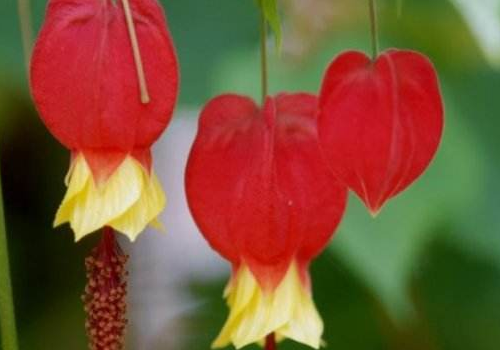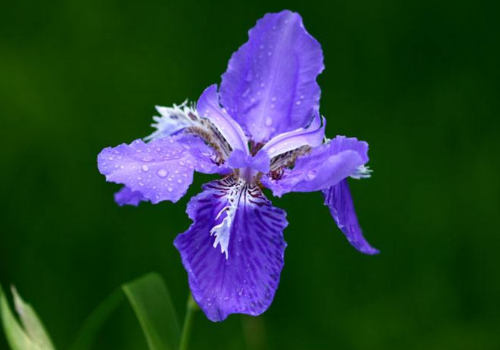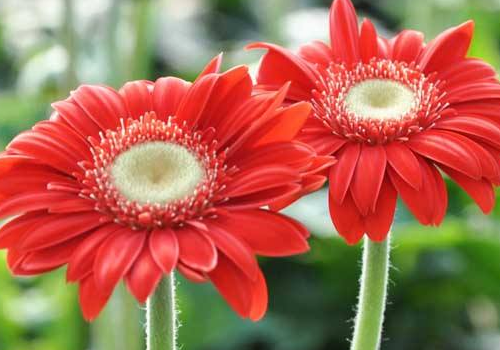Does the seed planting method of bluebells need pruning?
Bluebells, this kind of plant is super good-looking when it blossoms, and many people like breeding, so what is the seed planting method of bluebells? Do you need pruning:
Seed planting method of Camellia oleifera:
1. Lighting: bluebells like a sunny environment and need at least 3-4 hours of direct sunlight every day to grow well, so when we breed bluebells, it is best to consider the problem of lighting.
2. Watering: watering is very important for growing flowers. Vine bluebells like a humid environment, so during the growing period, if we want to dry about 1 cm on the surface of the basin soil, we need to water it. We can't wait for it to dry out before watering. It's too late. But do not accumulate water in the basin for a long time.
3. Temperature: bluebells like warm environment and are not cold-resistant, so the ambient temperature is at least above 10 ℃. If you want to make it grow normally, the temperature should be above 15 ℃ at least.
4. Fertilization: we can apply compound fertilizer every half a month during the growing season of spring, summer and autumn, as well as other general fertilizers, but not in winter.
5. Heart-picking: in order to make the vine wind chimes more branched and blossom, we can pick the heart when we are young.

Does the vine bluebell need pruning:
Generally speaking, the vine wind chime flower does not need pruning, unless the shape is already very messy, it needs pruning and shaping to make its shape compact, otherwise it generally does not need pruning, but what you need to pay attention to is that although it does not need to be pruned (pruning) every year like the rose, it is necessary to pay attention to heart-picking in cultivation to promote branching and make it blossom more.
The planting method of vine bluebells seed is introduced here, or can be studied, which generally does not need pruning.
Does the vine bluebell need pruning?
Is this plant often pruned?
In fact, it does not need to be pruned frequently, usually only once for a long time. Therefore, it is not accurate to say that it does not need pruning at all, only that it needs to be trimmed very few times.
The significance of pruning
Of course, the first one is to make the overall image look more perfect and bearable as mentioned above, so as to avoid the state of loose branches.
There is also closely related to pruning, that is, to pick the heart, or hit the top. This can promote the differentiation and development of lateral branches and promote flowering. However, it should be noted that sometimes there will be excessive growth of lateral branches, so we should also pay attention to strengthen the coring treatment of lateral branches again.
In addition, a method of reproduction is also related to pruning, so just mention it a little bit. That is, when cutting, you should first cut off the top branches to prepare for cutting.
Matters needing attention
All the factors that affect plants are generally related in one way or another, and not just one. Therefore, when pruning, we should also pay attention to the following conditions:
First of all, the light, this is extremely important, the growth and flowering of plants are absolutely inseparable from the sun, after pruning should also receive more light.
Next moisture, after pruning can be properly watered, do not let the soil too dry, just the right amount, can not be watered too much.
In order to make the pruning effect better, you can also loosen the soil for it.
Can the seeds of Sakyamuni fruit be eaten several years after planting?
Sakyamuni fruit, which is also a kind of fruit, is super delicious, so how many years after Sakyamuni fruit is planted? Can seeds be eaten:
A few years after the planting of Sakyamuni fruit:
The seedlings of Sakyamuni fruit usually begin to bear fruit 2-3 years after planting. The flowering period is from May to June and the fruiting period is from June to November. In addition, Sakya is a crop that can be harvested twice a year, that is, it can be harvested twice a year. After careful fertilization, pruning and passing flowers according to the season, the large and sweet fruit is obtained and picked at the right time when Sakya is ripe. In order to fully grasp the aroma and sweetness of Sakya.
Can Sakyamuni seeds be eaten:
Seeds cannot be eaten, but they can be planted. The specific planting methods are as follows:
1. Wash the seeds and soak them in water, then submerge the seeds with water. Soak in water every day for 6-8 days until no impurities are seen.
2. Choose a basin-free vessel of appropriate size (or seal the hole at the bottom of the basin), put it into the culture soil full of nine percent, and spray some water on the surface to make the surface soil moist.
3. When planting, the bud point of the seed is facing down, and it is arranged neatly from the outer circle of the basin to the center. Sakya seeds have a smooth surface and are not easy to pick, so it takes a little patience.
4. Then use wheat rice stone or other small pebbles to spread a thin layer on the surface. Spray the pot back and forth a few times to make the soil and seeds completely moist. And then it's waiting to sprout. Remember to spray water once a day.
5. About three weeks later, the seeds broke through the ground and grew into seedlings.
This is the end of the introduction of Sakyamuni fruit, this seed can not be eaten, we should pay attention to.
- Prev

When will the pronunciation of Iris plant and blossom
Iris, this plant is also super good-looking, many people like breeding, the growth is super good-looking, so what is the pronunciation of this Iris? When to plant and bloom: Iris pronunciation: yuan (kite) wei (tail) hua (flower)
- Next

When does African chrysanthemum sow flowers? what is it?
African chrysanthemum, which is also a kind of chrysanthemum, is known to many people and looks good, so when will this African chrysanthemum be sown? When to sow African chrysanthemum: generally speaking, you can sow seeds in spring, summer and autumn, and in most cases they sow in spring.
Related
- Fuxing push coffee new agricultural production and marketing class: lack of small-scale processing plants
- Jujube rice field leisure farm deep ploughing Yilan for five years to create a space for organic food and play
- Nongyu Farm-A trial of organic papaya for brave women with advanced technology
- Four points for attention in the prevention and control of diseases and insect pests of edible fungi
- How to add nutrient solution to Edible Fungi
- Is there any good way to control edible fungus mites?
- Open Inoculation Technology of Edible Fungi
- Is there any clever way to use fertilizer for edible fungus in winter?
- What agents are used to kill the pathogens of edible fungi in the mushroom shed?
- Rapid drying of Edible Fungi

